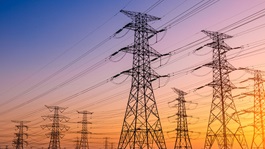In January 2020, Safe Work Australia released the 21st edition of the “Comparative Performance Monitoring Report” which provides trend analysis on the work health and safety and workers’ compensation schemes throughout Australia.1
The data in the report was obtained from the regulatory authorities of each Australian jurisdiction and relates to the period from financial year 2013-2014 to the financial year 2017-2018. The data relating to the Commonwealth government is categorised under the title “Australian Government” throughout the report although the compensation statistics specifically exclude military personnel within the Defence force.
Some of the key findings derived from the data include:
- An overall downward trend for the incidence rate of serious claims2 during the period with the “Australian Government” recording the largest decrease (down by 38 per cent);
- The mechanism of incident data showed that “body stressing” was the largest contributor to claims in the 2017-2018 year at 36.1 per cent followed by falls, trips and slips being hit by a moving object, and mental stress;
- For the “Australian Government”, the leading mechanism of incident for serious claims during the period was body stressing;
- The Australian Government recorded the “…highest proportion of mental stress claims (11.8 per cent) in 2017-2018”3 and also the “…highest proportion of serious claims (9.7 per cent) …[due to vehicle incidents] in 2017-2018, which was four times the Australian average”.
It is clear that safety regulatory activity is generally increasing across all the Australian jurisdictions including at the Commonwealth government level. In relation to Comcare enforcement activities, the data showed a “…substantial increase in both the number of proactive workplace visits (up 49 per cent) and reactive workplace visits (up 357 per cent) in 2017-2018 compared with the previous year”4. In addition, the data showed that the number of enforcement notices issued to the Australian Government went up by 141 per cent on the previous year. Comcare’s Inspectorate was noted as “…delivering a higher volume of regulatory activity and increasing the use of statutory notices as tools to improve compliance across the Australian Government jurisdiction”.5 Although no prosecutions were finalised by Comcare during the 2017-2018 period, 4 prosecutions were commenced.
In light of the data concerning mental stress claims, the recommendations made by Marie Boland (in the independent “Review of the model Work Health and Safety Laws final report”) that consideration be given to requiring notification of psychological injuries in the model Work Health and Safety Act or Work Health and Safety Regulations, together with the increasing enforcement activity, means regulatory attention is likely to be focussed on the way Commonwealth agencies are addressing these risks so far as is reasonably practicable to meet their obligations under the legislation.


